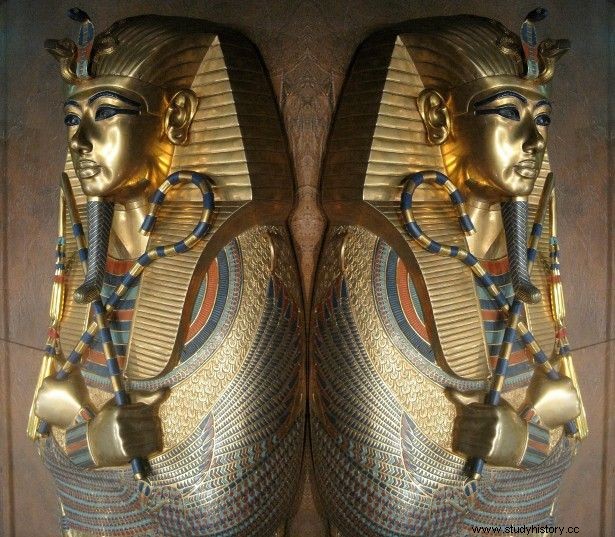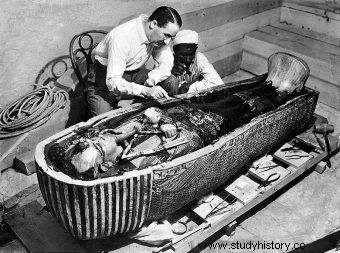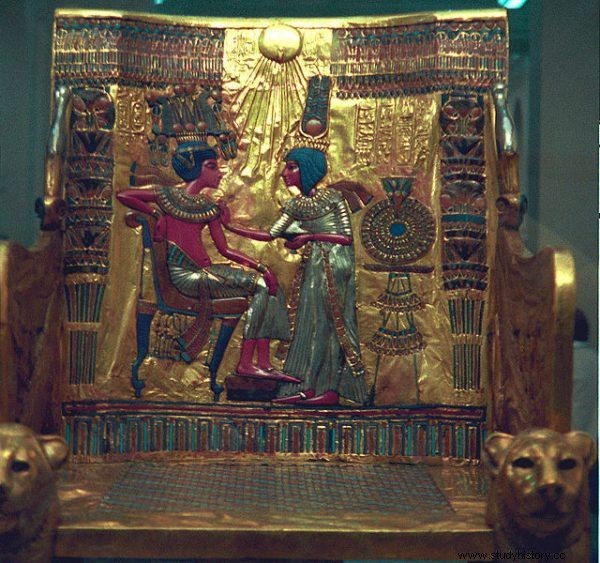Two tiny embalmed bodies rested in the tomb next to Tutankhamun's mummy. Research has shown that mummified fetuses are severely deformed. Who were these children? Did he die of natural causes? Or were they murdered and sacrificed to accompany Pharaoh to the afterlife? And what does incest have to do with it?
Scientists have long wondered whether the tiny mummies discovered in Tutankhamun's tomb are prematurely born, deceased children of the ruler, or maybe sacrificed symbols of innocence to accompany him in the afterlife . The DNA tests carried out in 2008 dispelled these doubts. For they showed that the children were twins and that their father was Pharaoh. However, this is by no means the end of the secrets.
Incest heritage
Geneticists managed to establish that the mother of the deceased toddlers was Tutankhamun's wife, Anchesenamon. At the same time, it gave an indication of the likely fate of the children. Well Anchesenamon - as we know from ancient sources - was the daughter of Akhenaten and Nefretiti, and therefore at the same time the half-sister of her husband . The offspring of endogamous (relatives) marriages are often burdened with genetic defects, which sometimes make it impossible to report pregnancy.

Tutankhamun
This could also be the case here, especially since the twins were born prematurely, most likely dead. Moreover, radiographic studies by Zahi Hawass (former Egyptian Minister of Monuments) and a team of archaeotropologists suggest that the fetuses were severely deformed. As reported by pathologist Philippe Charlier:
According to Hawass and his team, the CT scan detected malformations in both fetuses. The first was affected by Sprengel's disease, with abnormalities in the structure of the arm and spine . Regarding the latter, only significant prematurity was found in the text. According to the authors, the children were twins who died simultaneously.
According to this version, premature babies would be embalmed upon natural death and later buried with their father.

H. Carter examines the pharaoh's sarcophagus
Is this the final solution to the puzzle? According to Zahi Hawass - yes. As he says:“So our drama probably ends here, at least for now:a young couple are trying unsuccessfully to father an heir to the Egyptian throne. (...) Their love, however, turned out to be fruitless, and not only two of them, but the entire dynasty remained without an heir. "
Buried Secret
However, from a forensic perspective, the results of tomography and DNA tests are not at all conclusive. Charlier and his team took care of the case. As he established:
First, there were differences in the genetic material of the children. It was 99.7% identical, but not 100% identical, as it should be in the assumed case. So these would not be identical twins, but at most fraternal twins.

Tutankhamun
While the question of whether the children were twins or "ordinary" siblings is not the key, the second question in Hawass's interpretation is much more controversial. Phillippe Charlier believes that radiographic examinations allow for one more hypothesis:
It is possible that one of the babies did not have a malformation but died in the womb before being expelled. Then the fetus would macerate, that is, start to decompose in the uterus . The abnormalities visible in the examination were probably related to this process, and the body, deprived of its elasticity, dried up and deformed.
The decomposition could therefore have occurred later - due to the embalming process itself. In the case of such small bodies, studied so long after their death (Tutankhamun ruled in Egypt from 1333 to 1323 BC), unfortunately, it is difficult to precisely determine the cause of death. So the tiny mummies still keep their secrets.
Bibliography:
- Ph. Charlier, What the Dead Teach Us. Pathologist on the trail of the mysteries of history, Wydawnictwo Esprit 2015.
- Ph. Charlier, S. Khung-Savatovsky, I. Huynh-Charlier, Forensic and Pathology Remarks Concerning the Mummified Fetuses of King Tutankhamun , "American Journal of Roentgenology" 2012, CXCVIII, No. 6, pp. 629 et seq.
- Zahi Hawass, Tutankhamun's Family Secrets. How was mummy DNA studied? , "National Geographic Polska" (accessed:19/10/2019).
